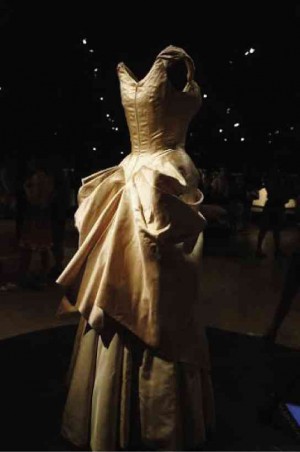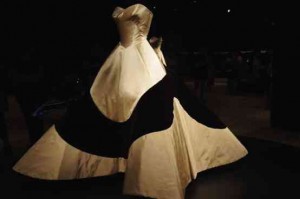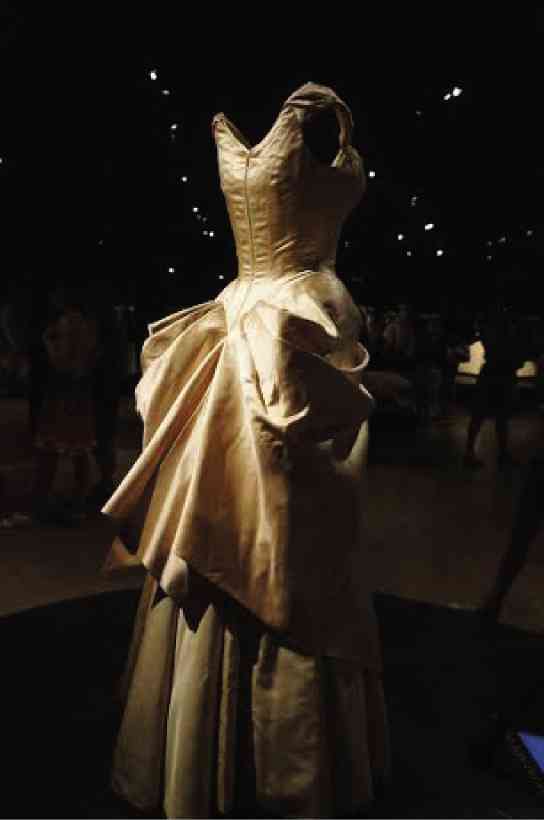
The Charles James exhibit at the Metropolitan Museum of Art Costume Institute (Met) in New York closed recently. According to the New York Times, it attracted over 500,000 visitors, taking its place among such memorable tribute exhibits as “Alexander McQueen: Savage Beauty” and “Jacqueline Kennedy: The White House Years.”
“Beyond Fashion” showcased 70 stunning fashion masterpieces of the Anglo-American designer James, making it the largest exhibit devoted to the late designer, who died in 1978. It was an incredible documentation of his genius and most innovative works—both a visual and cerebral feast—explaining how each piece was meticulously created.
If you missed the exhibit, here are some amazing things you can learn from the designer, who once quipped, “The Venus de Milo…would be most unfashionable unless she had a good dressmaker.”
Charles James was born on July 18, 1906, at Agincourt House in Surrey, England. His father, Ralph Ernest Haweis James, was a British military captain; his mother, Louise Enders Brega James, was a socialite from Chicago. Since his father didn’t support him as a fashion designer, James was mostly self-taught.
Written in the exhibit’s glass walls is James’ philosophy on pursuing one’s passion: “There is no going back. Study the past to know why, not what, and from the why, dream and do. There is no shortcut to creation. There may also be no profit.”
He began his career as a milliner during the 1920s, in his mother’s hometown, where he would mold his creations directly on his clients’ heads; the same technique he would use when

crafting couture, molding the fabric to his client’s body.
He was a voracious reader who engaged in contemporary art movements, especially surrealism and abstract expressionism. He saw his creative output equal to that of a painter, sculptor or composer. He once said, “Brancusi has his medium; Picasso, Faulkner, Shostakovich? Theirs. Mine happens to be cloth.”
At the very heart of his designs are carefully thought-out architectural structures, seen mostly in his evening gowns.
A ball gown he made in 1947 was displayed in the gallery, made of pale peach silk satin and faille. James was apparently enamored of pouf drapery for its sculptural quality. The gown’s knee-level front pouf takes its cue from the so-called pannier drapery of the late Edwardian period, while the complex skirt construction was a modernist take, in which the pouf melts into a straight fall of fabric at the back.

The gown was immortalized by Cecil Beaton’s famous 1948 photograph, as well as Millicent Rogers’ portrait by Bernard Boutet de Monvel.
James’ brilliance in draping with abundant cloth rendered in lavish asymmetrical sculptural forms could be seen in the dress he made for Cynthia Cunningham, the future Mrs. Robert Coulson, at her debut in 1951. It was a ball gown made of ivory satin. The massive cloth was ingeniously draped into pillow-like crescents, and despite the volume, didn’t require any inner support.
The four discreet sections, which seemed symmetrical on the front, back and side, would be the blueprint for the four-lobed silhouette of his most iconic Clover Leaf gown.
Another interesting ball gown displayed was in emerald-green satin. It was a free-form spiraling flounce, a wide-contoured circle that was folded over on itself, which could only be achieved through an engineer’s understanding of counterbalanced forces.
‘Swan’ gown
The “Swan” gown was made in 1954 of brown silk chiffon, cream silk satin, and yellow, purple, light brown and brown nylon tulle—a lighter contemporary version of a heavily draped

combination of shell pink with copper are signature James characteristics.
Victorian bustle dress. James used chiffon and stuff nylon tulle, relatively new fabrics during those times. The skirt has six layers of 1,080 square feet of tulle in various colors to give depth and luminosity. Despite its ethereal appearance, it weighed 12 lbs, with a graceful back-bodice curvature.
A ball gown James made for Mrs. Ronald (Marietta Peabody) Tree in 1955 was made of dark pink silk taffeta and red, pink and white nylon tulle. James needed to minimize the bust and create a low ribcage, since Tree was a large woman. The dress was perfected through rigid interior boning in the bodice and intricately tucked exterior hip drapery, while the bouffant skirt made of rich white satin was supported by multiple layers of red, pink and white nylon tulle—a hidden refinement revealed only with movement.
James’ most iconic piece is the Clover Leaf Ball Gown, which he made for Mrs. William Randolph (Austine) Hearst Jr. to wear to the Eisenhower Inaugural Ball in January 1953. But in June, Hearst lit up London’s grandest political event, the coronation of Elizabeth II, with James’ dramatic black-and-white abstract design, a white silk satin and faille black silk-rayon velvet gown. Though it weighed 10 lbs, the skirt sat comfortably on the hips and was so balanced, it moved with the gentle sway of the wearer.

James was highly regarded by his contemporaries. Christian Dior called James’ designs “poetry” (“Charles James” by Richard Martin; New York, 1997). Dior recognized James as “the greatest talent of my generation,” and credited James for inspiring his revolutionary 1947 “New Look” collection.
Among James’ loyal patrons were fashion photographer Cecil Beaton, jewelry designer Elsa Peretti, socialite and Standard Oil heiress Millicent Rogers, and fashion legends Elsa Schiaparelli and Diana Vreeland.
Even the esteemed Cristobal Balenciaga, known to be a master of cut and cloth, was generous with his praise of James. In “The Genius of Charles James” by Elizabeth Ann Coleman (New York, 1982), Balenciaga described James as “the world’s best and only dressmaker.”













































